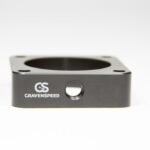The ubiquitous automatic transmission, a marvel of modern engineering, simplifies driving for millions. Nestled amongst the familiar “P,” “R,” “N,” and “D,” often resides the enigmatic “L.” Understanding this single letter unlocks a deeper appreciation for your vehicle’s capabilities, especially when confronting challenging terrains or demanding tasks.
So, what exactly does “L” signify on a gear shift? The answer is deceptively straightforward: Low gear. However, the implications of engaging “L” extend far beyond mere simplicity. It’s about harnessing the potent forces of torque, mastering engine braking, and maintaining optimal control in situations where the standard “Drive” setting simply won’t suffice. Think of it as summoning the inner griffin of your automobile – unleashing raw power for specific, often arduous, endeavors.
Let’s delve into the specific scenarios where “L” proves invaluable. It’s not just about crawling along at a snail’s pace; it’s about controlled power delivery. Imagine ascending a steep, protracted incline. In “Drive,” the transmission might constantly hunt for gears, struggling to maintain momentum, potentially overheating, and increasing wear and tear. Selecting “L” locks the transmission in its lowest gear, maximizing engine torque delivered to the wheels. This provides the necessary grunt to conquer the ascent without straining the engine or transmission. Consider it akin to shifting into a lower gear on a bicycle when tackling a challenging hill – reducing the effort required to propel yourself forward.
Towing heavy loads presents another compelling case for utilizing “L.” Whether you’re hauling a trailer, boat, or another vehicle, the added weight significantly increases the demands on your vehicle’s drivetrain. Operating in “Drive” can lead to excessive slippage within the transmission, generating heat and potentially causing premature failure. “L” provides the extra pulling power needed to move the load safely and efficiently, minimizing stress on vital components. It allows the engine to operate within its optimal power band, ensuring consistent and reliable performance. Think of it as providing your vehicle with a muscular exoskeleton, augmenting its strength to handle the burden.
Descending a steep grade can be just as treacherous as ascending one. Relying solely on the brakes can lead to overheating and a loss of braking power, a potentially catastrophic situation. Engaging “L” provides engine braking, utilizing the engine’s resistance to slow the vehicle down. This reduces the load on the brakes, preventing them from overheating and maintaining control. The effect is similar to dragging an anchor – the engine acts as a restraint, preventing the vehicle from accelerating uncontrollably. It’s about harnessing the kinetic energy of the descent and converting it into manageable resistance.
Navigating off-road terrain often necessitates the use of “L.” Whether you’re traversing rocky trails, sandy dunes, or muddy bogs, the lower gear provides the necessary traction and control to navigate challenging obstacles. The increased torque allows you to crawl over rocks and through mud without spinning the wheels, minimizing the risk of getting stuck. Think of it as equipping your vehicle with specialized grappling hooks, allowing it to grip the uneven terrain and pull itself forward. It’s about finesse and controlled power, rather than brute force.
It’s crucial to understand the limitations of “L.” Prolonged use at high speeds can cause the engine to over-rev, leading to damage. “L” is intended for low-speed, high-torque applications, not for cruising on the highway. The engine will scream in protest, fuel economy will plummet, and mechanical wear will accelerate. It’s like using a sledgehammer to crack a walnut – unnecessarily aggressive and potentially destructive. Consult your vehicle’s owner’s manual for specific recommendations regarding the use of “L.”
Furthermore, some vehicles may have multiple “Low” gear settings, often denoted as “L1,” “L2,” etc. These settings offer even finer control over engine speed and torque, allowing for precise adjustments depending on the specific conditions. “L1” typically provides the most torque and the slowest speed, ideal for extremely steep inclines or particularly challenging off-road obstacles. “L2” offers a slightly higher speed and less torque, suitable for less demanding situations. Understanding the nuances of these different “Low” gear settings allows you to optimize your vehicle’s performance and maintain maximum control. It’s about understanding the gradations of power, like a conductor leading an orchestra through varying crescendos and diminuendos.
In conclusion, the “L” on your gear shift is more than just a letter; it’s a gateway to unlocking your vehicle’s hidden potential. By understanding its purpose and utilizing it judiciously, you can conquer challenging terrains, tow heavy loads with confidence, and maintain control in demanding situations. “L” is the key to harnessing the raw power and controlled finesse necessary to master the road, whether paved or not. It’s a symbol of mechanical advantage, a testament to the ingenuity of automotive engineering, and a vital tool for any discerning driver.










Leave a Comment